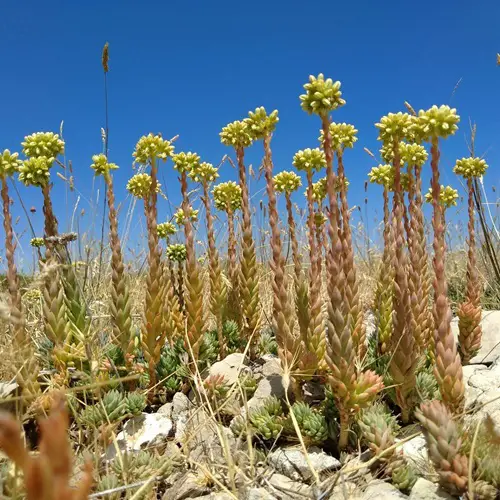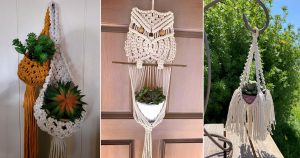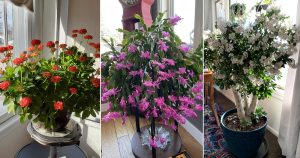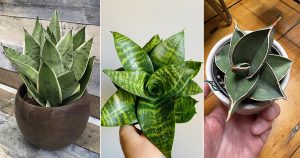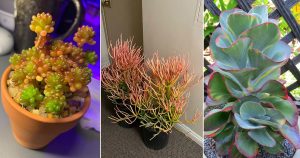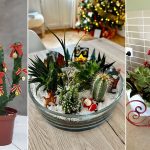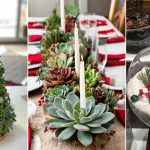Looking for Hardy Plants for The Desert That’s Not a Cactus? Explore some tough and resilient options for your garden!
Cacti often take center stage when it comes to desert plants. However, the desert is home to many more species of resilient plants. Such hardy plants bear a variety of textures, colors, and shapes. And the best part is that they are drought-tolerant and hard to kill! Let’s talk about some of them in this listicle!
Hardy Plants for The Desert That’s Not a Cactus
1. Agave
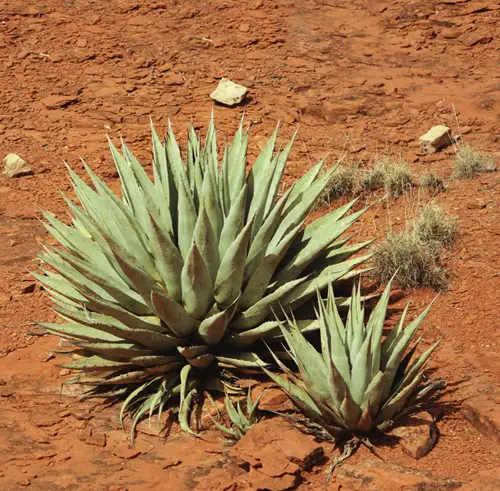
Botanical Name: Agave americana
These iconic desert dwellers are ones with thorns but aren’t cacti because they have leaves too! Agaves are popular for their symmetrical rosettes of thick, spiky leaves, and their resilient natures. The thick leaves store water and are covered with a protective waxy coating that minimizes evaporation to survive drought conditions.
Apart from this, Agave succulents are highly resilient to pests, which is why they’re good choice for beginners.
Fun Fact: Beyond their looks, they have some practical uses like making tequila or Agave syrup..
2. Aloe Vera
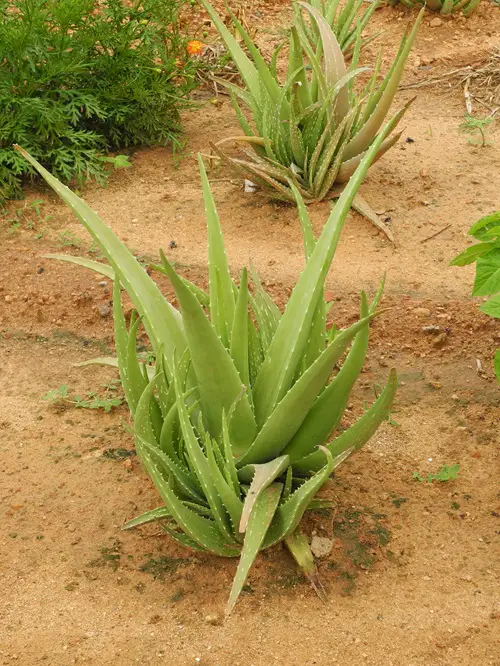
Botanical Name: Aloe barbadensis Mill
Aloe vera are popular succulents that are not only drought-tolerant but are also famous for their medicinal properties. Their thick, fleshy leaves store a gel-like liquid that has a versatile list of uses such as for treating cuts and burns or treating skin irritations and so on.
Such hardy plants look beautiful for their compact forms and structures which can easily fit in any space. If you want an easy-to-grow and care-for desert plant, then this should be your first choice.
3. Yucca
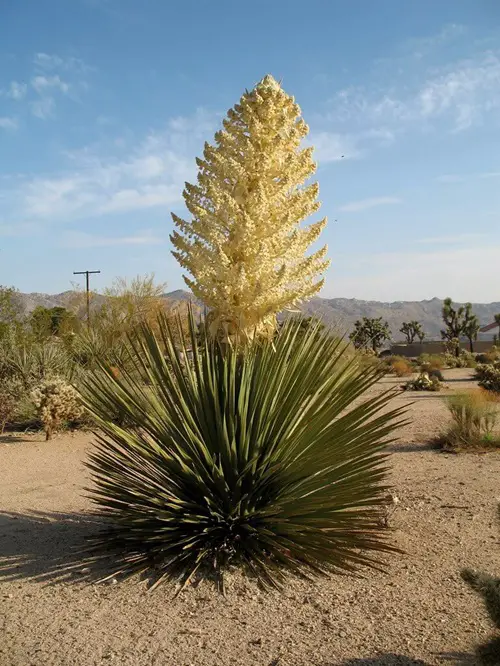
Botanical Name: Yucca elata
The Yucca plants are evergreen perennials that are highly adaptable, thriving in sandy or rocky soils where other plants struggle to survive. Thanks to their taproots that go deep enough to access groundwater!
Some Yucca species are even used in traditional crafts, with their fibers being turned into ropes or mats. If you live in arid regions, then grow this variety to admire its stiff, sword-like leaves and towering flower stalks.
4. Desert Marigold
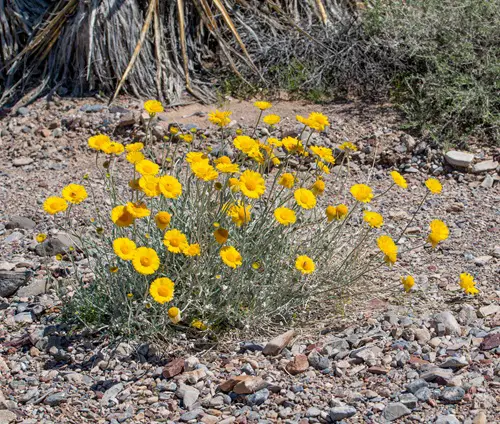
Botanical Name: Baileya multiradiata
Did you know that Desert marigolds can bloom in the desert as well? Yes, these hardy annuals light up arid landscapes with their bright yellow flowers. They are native to the southwestern United States and Northern Mexico and are well familiar with harsh desert conditions.
The blooming period starts in spring and lasts through the fall, attracting beneficial insects like bees and other pollinators to your garden.
5. Ocotillo
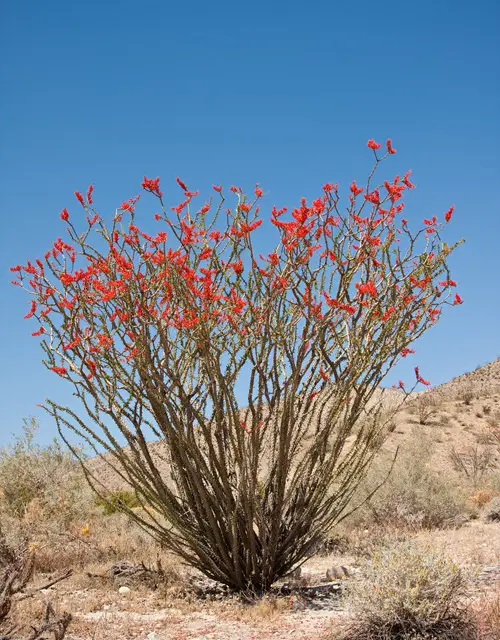
Botanical Name: Fouquieria splendens
A unique shrub that grows in the harsh, arid topography of the desert. The Ocotillo plant features long, spiny stems and beautiful red flowers. It exhibits quite a fascinating nature to survive during extreme drought conditions—by shedding its leaves to conserve water.
Besides, it can be an excellent choice for creating a vertical garden in desert landscapes, as a standalone piece, or grouped with other plants.
6. Texas Sage
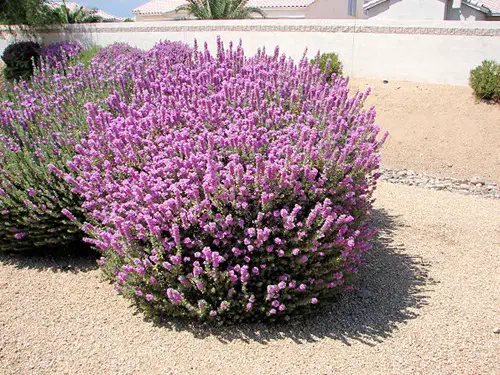
Botanical Name: Leucophyllum frutescens
Also popular as the “Barometer Bush”, it is considered a gem of desert landscapes. It has the mysterious ability to bloom just before rainstorms! Texas Sage features silvery velvet foliage that contrasts nicely with its purple, pink, or lavender flowers.
This gem flourishes in the hot and dry conditions of the desert adapting gracefully to the sandy soils like cacti. If you are planning to add some low-maintenance plants to your garden get some Barometer bushes for your collection.
Fact: The Texas Sage plant is resistant to pests and diseases and can withstand harsh direct sunlight, wind, and poor soil quality with utmost ease.
7. Blackfoot Daisy
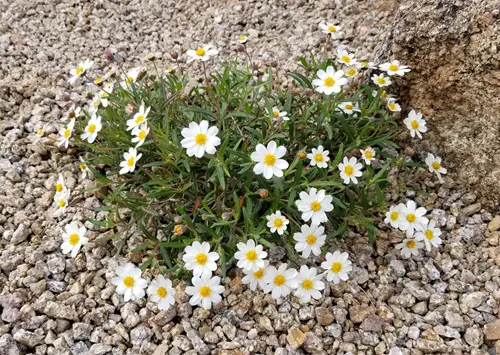
Botanical Name: Melampodium leucanthum
Daisies in the desert! The Blackfoot daisy is a hardy plant that gracefully flourishes in rock gardens or arid climates. It requires full sun and quick-draining soil like the sandy soils that are found in the desert.
This beautiful flowering plant is desired for its heat and drought tolerance abilities. If you are somewhat bored with growing cacti, then go for this bloomer with its white Zinnia-like flowers.
8. Desert Willow

Botanical Name: Chilopsis linearis
A better willow substitute for the desert, the Desert willow is not an actual willow but looks just like one! Compared to desert plants like succulents and cacti this plant is a fast grower that can grow 2-3 feet a year and reach a magnificent height of 30 feet.
It is a multi-trunked tree that bears beautiful flowers with fragrance and resembles mostly orchids. The blooming period of the clusters starts in April and continues into late summer. Interestingly, the plants can bloom the first year after propagating!
9. Bougainvillea
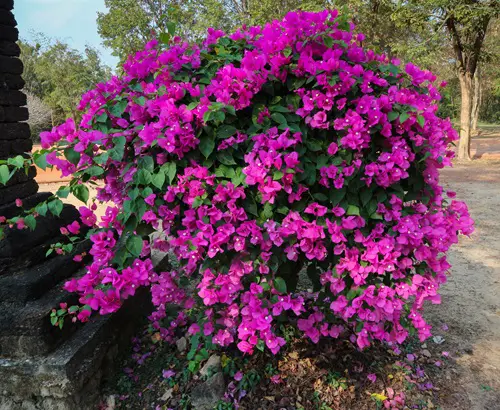
Botanical Name: Bougainvillea glabra
Are you quite surprised to see this woody vine on this list? Then you must know that this gorgeous flowering plant is tolerant of drought, heat, and salt. Moreover, it is an ornamental with versatile uses in gardens and home decor. Sometimes used as an annual garden plant or mostly as a houseplant in containers and hanging baskets.
Besides, the propagation is very simple and easy, just plant some cuttings and it will flourish to give new blooms in the next season. You can choose from various color varieties ranging from pink, purple, white, red, orange, and yellow.
Fun Fact: Bougainvilleas are traditionally planted along trellises and fences but can also be trained to grow more shrub-like in containers for better appeal.
10. Sedum
Botanical Name: Sedum sediforme
Sedum sediforme plants are well adaptable to arid environments. The thick fleshy leaves and stems store water to survive the dry conditions. Available in various sizes, colors, and shapes, these succulents are best suited for ground covers or as border plants.
Just ensure that the soil has proper drainage and the plant receives full sun to partial shade for a minimum of 6 hours every day to enjoy its glossy foliage and colorful blooms.
11. Adenium
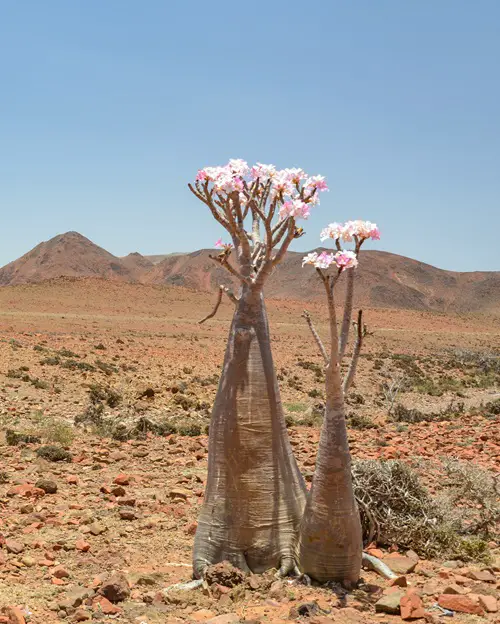
Botanical Name: Adenium obesum
Also popular as the “Desert Rose,” Adenium is a stunning and tough plant perfect for arid climates. Its thick, swollen trunk acts like a built-in water tank, helping it thrive during dry spells. And those vibrant, trumpet-shaped flowers in pink, red, or white? They’re pure eye candy for your desert garden.
Adenium isn’t just a looker; it’s a fighter! Give it well-draining soil, and plenty of sunlight, and watch it bloom effortlessly. Just one rule—don’t overwater this hardy beauty, or it might not stay so cheerful.
In the end, hoping that this list of the best hardy plants for the desert that’s not a cactus will add more options to your collections. Let us know what more would you like to know about such hardy plants.

